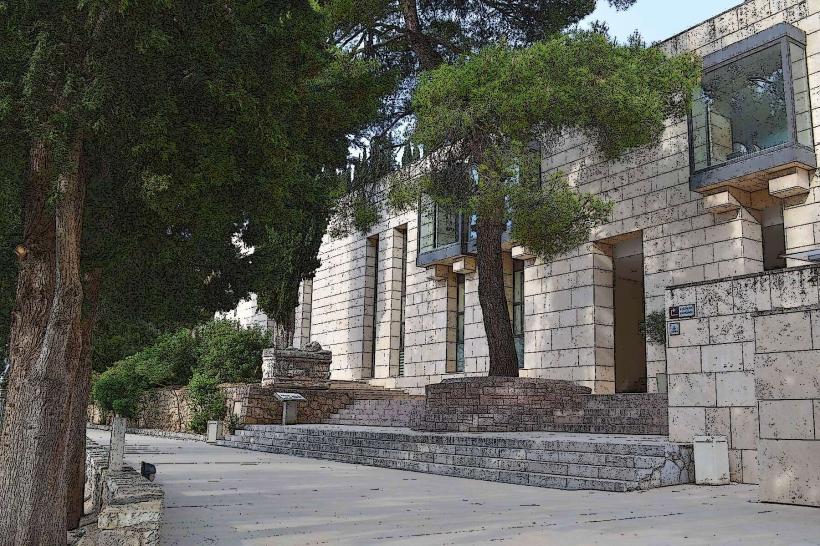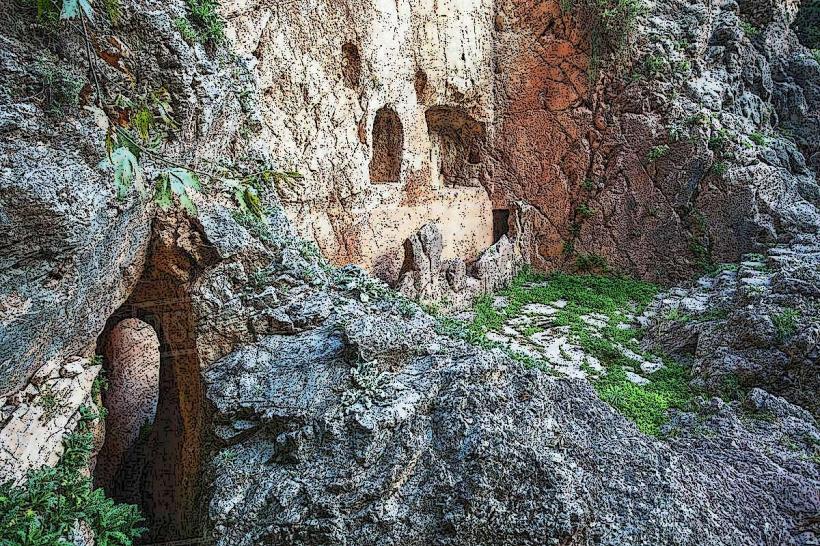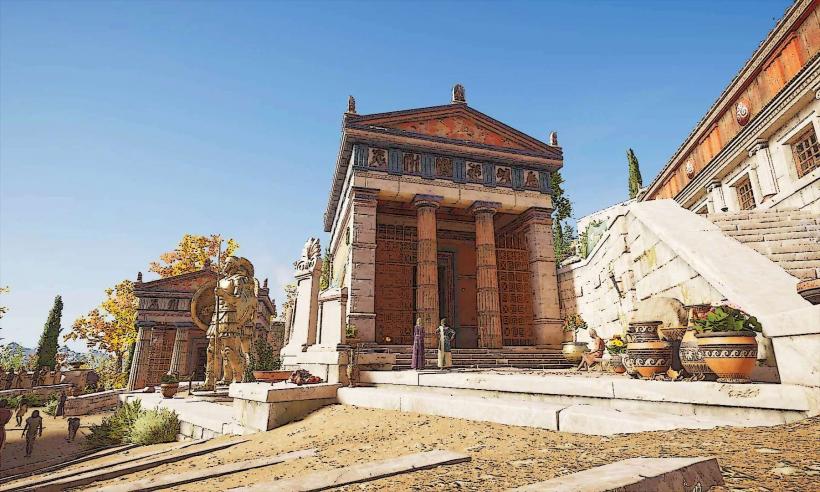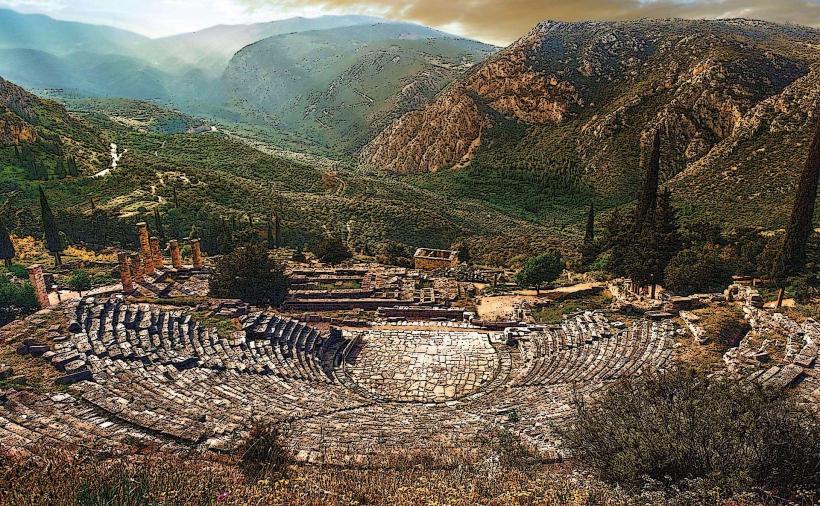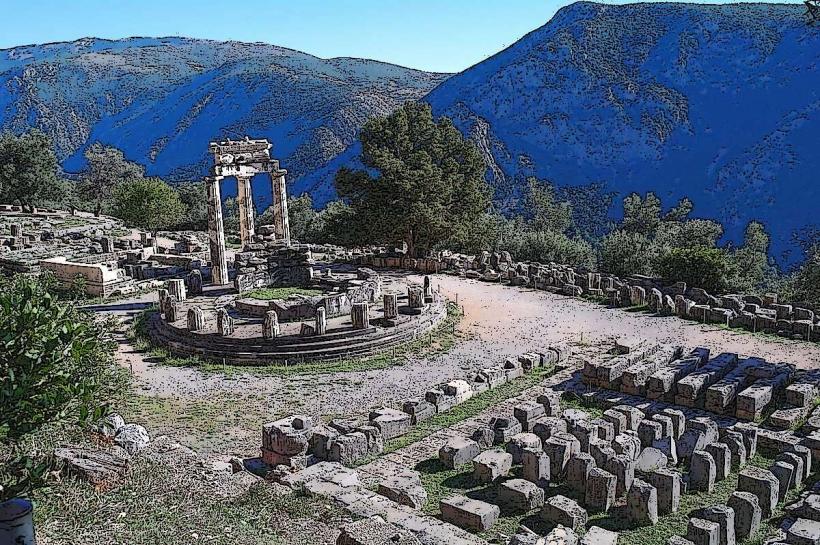Information
Landmark: Delphi Temple of ApolloCity: Delphi
Country: Greece
Continent: Europe
The Temple of Apollo at Delphi is one of the most significant and iconic ancient Greek monuments, renowned for its historical, religious, and cultural importance. It was dedicated to Apollo, the god of prophecy, music, and healing, and it was the focal point of the ancient Delphic Oracle, one of the most famous oracles of the ancient world.
Key Information about the Temple of Apollo at Delphi:
Location:
- The Temple of Apollo is situated at Delphi, in central Greece, on the slopes of Mount Parnassus. Delphi was considered the center of the world in ancient Greek mythology, often referred to as the "Omphalos" (the navel or center of the earth), marking its spiritual significance.
Historical Background:
Oracle of Delphi: The Temple of Apollo housed the Pythia, the high priestess who served as the oracle of Apollo. People from all over the ancient Greek world would come to Delphi to consult the oracle, seeking divine advice on matters such as politics, warfare, and personal decisions.
Construction:
- The first temple at Delphi was constructed around 600 BCE, but it was destroyed by fire in 548 BCE.
- The current Temple of Apollo was built in around 330 BCE, during the Classical period, with funds donated by various city-states. The design is attributed to the architect Spintharus, though many details of the construction process remain unclear.
Architectural Features:
Doric Design: The temple is built in the Doric style, which is characterized by simple, sturdy columns without ornate decoration. The temple originally had 6 columns on the front and 15 along the sides.
Dimensions: The temple measured about 18 meters (59 feet) in width and 46 meters (151 feet) in length, with a central cella (inner chamber) housing a statue of Apollo.
Columns and Roof: Although the temple’s columns are now mostly in ruins, the structure once featured large marble columns standing more than 7 meters (23 feet) tall. The temple was covered with a bronze roof, and the frieze above the columns depicted scenes from Greek mythology.
Sculpture and Decoration: The temple featured several important sculptural elements, including:
- The frieze depicted scenes from the Greek myth of the Gigantomachy (the battle between the gods and giants).
- The pediments of the temple were decorated with famous sculptures, such as those illustrating the myth of Apollo’s birth and other related legends.
Role of the Oracle:
The Temple of Apollo was the home of the Delphic Oracle, where the priestess, known as the Pythia, would deliver prophecies in a trance-like state. She was believed to be inspired by Apollo himself and would speak in riddles or ambiguous language, which were often interpreted by the priests.
The oracle was highly regarded throughout the ancient Greek world, and many notable figures, such as kings, politicians, and military leaders, sought guidance from the Pythia before making important decisions. The most famous consultation was made by King Croesus of Lydia, whose decision to attack Persia was influenced by a prophecy from the oracle.
Archaeological Findings:
Statues and Inscriptions: Many statues and inscriptions have been found at the site, most notably the "Charioteer of Delphi", an ancient bronze statue that is one of the most well-preserved examples of Greek bronze sculpture. Additionally, the "Omphalos", a stone believed to mark the center of the world, was located within the temple precinct.
Treasuries: Several treasuries were built around the temple by various Greek city-states to house offerings to Apollo and inscriptions detailing the city-states' gratitude for the oracle’s guidance. Notable examples include the Treasury of the Athenians and the Treasury of the Siphnians, which contain significant artistic and architectural remains.
Destruction and Decline:
Decline of the Oracle: The Oracle of Delphi declined during the Roman period and was eventually closed in the 4th century CE by the Roman Emperor Theodosius I, who sought to suppress pagan religions.
Earthquake Damage: The temple suffered significant damage over the centuries, especially from earthquakes. By the 6th century CE, the temple was in ruins, and much of its structure had collapsed.
Excavation: Excavations of the site began in the 19th century, and ongoing archaeological work has uncovered many of the ruins of the temple, as well as the surrounding structures. The archaeological site of Delphi, including the Temple of Apollo, was designated as a UNESCO World Heritage Site in 1987.
Significance:
The Temple of Apollo at Delphi remains one of the most important archaeological sites in Greece and is an essential part of the ancient Greek cultural and religious heritage. It represents the influence of religion, mythology, and politics in ancient Greek society.
The site continues to attract visitors and scholars interested in the ancient Greek world, the role of oracles, and the architectural achievements of the ancient Greeks.
Today:
The ruins of the Temple of Apollo are part of the larger archaeological site of Delphi, which includes the theater, stadium, and other structures. Visitors can tour the site, including the restored parts of the temple, and view many of the artifacts recovered from the area at the Delphi Archaeological Museum.
The view from the temple, overlooking the valley below and the Gulf of Corinth, is considered one of the most breathtaking in all of Greece.
Conclusion:
The Temple of Apollo at Delphi is not just an architectural marvel, but also a symbol of the profound spiritual and cultural influence Delphi had on the ancient Greek world. As the seat of the Delphic Oracle, it played a central role in guiding the decisions of leaders and influencing the course of history in the ancient Mediterranean.

